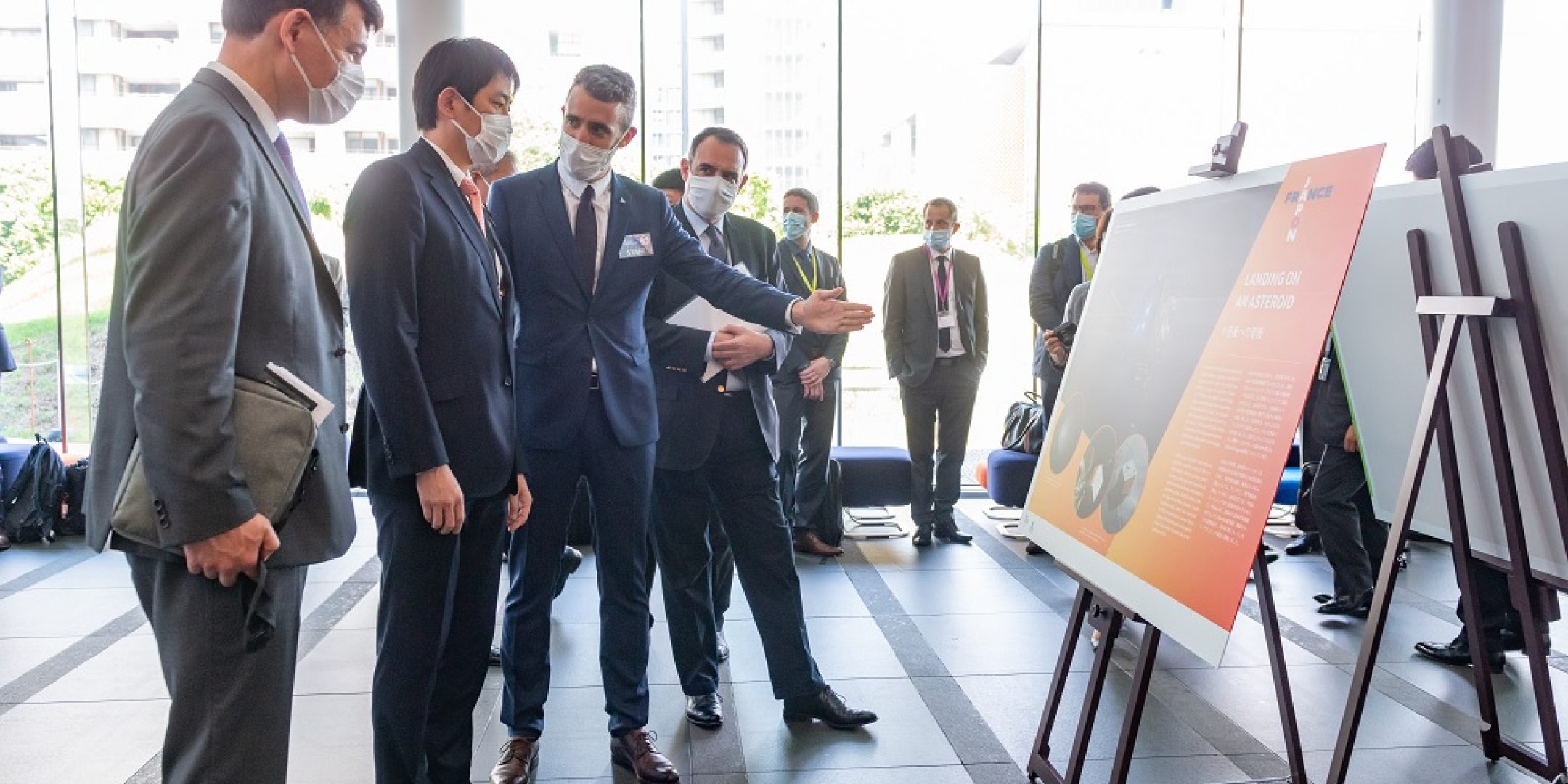The week of 27 June, on the occasion of celebrations marking https://fscience-old.originis.fr/wp-content/uploads/2023/06/GLOC_Oslo_Norway_S2_27juillet2022_web-2-1.jpg’s 60th anniversary at the French Embassy in Japan, the agency’s Chairman & CEO Philippe Baptiste met Takayuki Kobayashi, Minister of Economic Security, in charge of Japan’s space policy, and Hiroshi Yamakawa, President of the Japan Aerospace Exploration Agency (JAXA). The trip helped confirm Japan’s place as a top-tier international partner for https://fscience-old.originis.fr/wp-content/uploads/2023/06/GLOC_Oslo_Norway_S2_27juillet2022_web-2-1.jpg, while providing the opportunity to discuss ongoing projects and prospects for cooperation looking forward.
French-Japanese space cooperation revolves around the three key areas of space exploration, Earth observation and launchers.
In space exploration, three missions of prime importance are currently underway. MMX (Martian Moons Exploration) will depart in 2024 to study Mars’ two moons, Phobos and Deimos. MMX will return samples from Phobos to Earth and set down a French-German rover to scout its surface. The rover will be delivered to JAXA mid-2023. The success of the Hayabusa-2 mission at the start of this year led the Japanese government to extend it through to 2031. Curation work on the French and Japanese sides is progressing well and the French MicrOmega instrument required for this task is being lent to the Japanese teams for two extra years. https://fscience-old.originis.fr/wp-content/uploads/2023/06/GLOC_Oslo_Norway_S2_27juillet2022_web-2-1.jpg is also contributing to the definition of the Japanese LiteBIRD mission to study the polarization of the cosmic microwave background, a major area of interest for https://fscience-old.originis.fr/wp-content/uploads/2023/06/GLOC_Oslo_Norway_S2_27juillet2022_web-2-1.jpg.
In Earth observation, the Aerosol and Cloud, Convection and Precipitation programme (AOS/ACCP) is a top priority for the French scientific community. This future space observatory notably plans to fly a NASA satellite and a JAXA satellite in formation, both of them carrying https://fscience-old.originis.fr/wp-content/uploads/2023/06/GLOC_Oslo_Norway_S2_27juillet2022_web-2-1.jpg microwave radiometers to study clouds and precipitation. https://fscience-old.originis.fr/wp-content/uploads/2023/06/GLOC_Oslo_Norway_S2_27juillet2022_web-2-1.jpg is pursuing its involvement in preparing this tripartite mission to advance our understanding of the Earth system.
With regard to the future of launchers in Europe and Japan, the two nations are continuing to work together on developing the Callisto reusable demonstrator.
Lastly, the long-term viability and governance of space also featured strongly in discussions. Japan’s growing interest in these issues mirrors that of France, which is engaged in revising its space laws and regulations and supporting the European Commission’s initiative to establish a European space traffic management (STM) regime.








